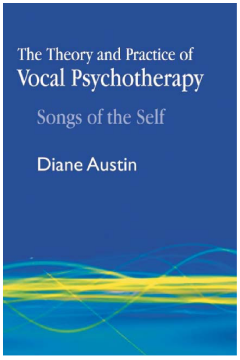
Additional Information
Book Details
Abstract
The voice is the most powerful and widely used instrument in music therapy. This book demonstrates the enormous possibilities for personal change and growth using a new, voice-based model of psychotherapy where the sounds of the voice are expressed, listened to and interpreted in order to access unconscious aspects of the self and retrieve memories, images and feelings from the past.
Combining theory with practice, the book explains the foundations of vocal psychotherapy and goes on to explore its usage in clinical practice and the various techniques involved. The book integrates important concepts from depth psychology such as regression, reenactment and working with transference and counter-transference with the practice of vocal music therapy. Drawing on over twenty years of research, the author uses case studies to illustrate specific vocal interventions, including improvisation techniques such as vocal holding, free associative singing and psychodramatic singing.
Vocal Psychotherapy highlights the value of voice work as an integral part of the psychotherapeutic process and provides a model of advanced clinical work that will be essential reading for music and creative arts therapists.
I highly recommend this book. I hope that it will help readers to focus on the human voice as an important instrument within music therapy, and that it will be an inspiration for other music therapists to do as Austin has done - to write about their vocal approaches in their clinical work. There is a tremendous need for a range of different approaches to be described as well as for more research on the subject. We have much to learn and document about the human voice within music therapy: its nature, possibilities and effects.
British Journal of Music Therapy
Diane's pioneering work with the voice in music therapy is an inspiring and much needed contribution to our field.
Dr. Clive Robbins, Founding Director of the Nordoff-Robbins Center for Music Therapy at New York University
Diane Austin, DA, ACMT, LCAT, received her Doctorate in Music Therapy from New York University. She has maintained a private practice in music psychotherapy for the past 20 years with offices in Manhattan and Sag Harbor, New York. Diane is the Executive Director of The Music Psychotherapy Center and an associate professor in the Graduate Music Therapy program at New York University. Widely published in books and journals, she lectures and teaches nationally and internationally, integrating the theories and ideas from Depth Psychology with the practice of music therapy and the use of the voice in the therapeutic process. Diane lives in Sag Harbor, New York with her husband and Amazon parrot.
Diane Austin has achieved no mean feat in this commendable book. She does indeed manage to integrate key concepts from depth psychology with vocal psychotherapy whilst keeping it real... how do I feel now about the use of voice and music in the Play room? More enthusiastic, more open to experimentation, in which case, Ms Austen would possibly consider her job done!
Play for Life
This much anticipated publication details not only Austin's theoretical and clinical practice, but is also packed full of her years of work and life experience. I think it is an intensely personal book and, on reading it, one feels close to her passion and commitment to the work, to music and to people. In the first half Austin draws upon the physical, philosophical, theoretical and technical aspects of vocal work, viewed from the different stances she has integrated into her method. In the second part practical and specific areas are addressed, and specific questions posed about vocal psychotherapeutic work in general. Characteristic of Austin's work, the client is always present and there are case examples throughout, along with her personal reflections upon the ways in which she makes use of her own self in the clinic room, for one of the most valuable aspects of the book is that the songs of the Self in the title are not only those of her clients but also of herself. This depth of the therapist's personal engagement and its contribution to the therapeutic process is a fundamental characteristic of our work, but detailed reflection about this is often absent from music therapy publications. It is well represented here... I recommend to any reader, at any level of practice.
Nordic Journal of Music Therapy
Table of Contents
| Section Title | Page | Action | Price |
|---|---|---|---|
| Introduction | |||
| 2 Approches de la gestion des déchets solides | |||
| 3 Évaluation axée sur l’humain | |||
| 4 Satkhira au Bangladesh | |||
| 5 Dhenkanal dans l’Odisha en Inde | |||
| 6 Ville de Kisumu au Kenya | |||
| 7 Dakar au Sénégal | |||
| 8 Services de gestion des déchets axés sur l’humain | |||
| 9 Conclusion |
